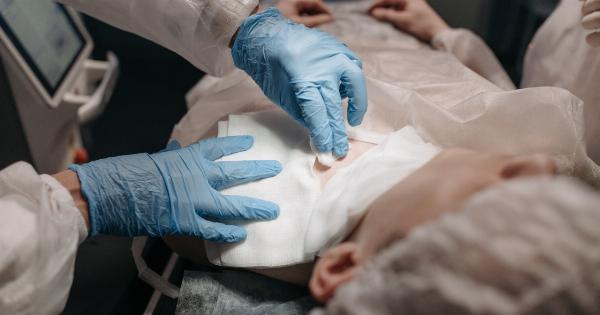Thyroid surgery is a major procedure involving the removal of all or part of the thyroid gland. Historically, the surgery required a large incision in the neck, leading to a significant scar.
With the advancement of technology, a new technique called oral thyroidectomy has emerged, allowing thyroid removal without any visible scar.
What is Oral Thyroidectomy?
Oral thyroidectomy is a minimally-invasive surgery that removes the thyroid gland through the mouth, without any external incisions. This procedure is a safe and effective alternative to traditional thyroidectomy and offers several advantages.
How is Oral Thyroidectomy Performed?
Oral thyroidectomy is performed under general anesthesia. The surgeon makes a small incision inside the lower lip and uses a special instrument called an endoscope to access the thyroid gland.
The gland is then carefully removed using microsurgical instruments through the mouth and the incision is closed with dissolvable sutures.
Advantages of Oral Thyroidectomy
Oral thyroidectomy offers many advantages over traditional thyroid surgery. First and foremost, there is no visible scar. The incision inside the lower lip is tiny and not noticeable from the outside.
This is a significant benefit for patients who are self-conscious about scarring or work in professions where visible scars could be a detriment.
Another advantage is a reduced risk of complications such as injury to the recurrent laryngeal nerve, which runs near the thyroid gland and is responsible for vocal cord function.
With oral thyroidectomy, the nerve is less likely to be damaged because the surgeon can directly visualize and avoid it. The risk of hypoparathyroidism, which is a condition in which the body does not produce enough parathyroid hormone, is also reduced with oral thyroidectomy.
Oral thyroidectomy is associated with less post-operative pain and a shorter recovery time compared to traditional thyroid surgery. Patients typically experience less swelling and can resume normal activities within a few days.
The small incision inside the lower lip heals quickly and does not require any special care.
Who is a Candidate for Oral Thyroidectomy?
Not all patients are suitable for oral thyroidectomy. Patients with large or cancerous thyroid nodules or who have previously had neck surgery may require traditional thyroid surgery.
The decision about which surgical approach to use should be made by the patient and their surgeon.
Risks of Oral Thyroidectomy
As with any surgical procedure, oral thyroidectomy carries a small risk of complications, including bleeding, infection, or injury to adjacent structures such as blood vessels or the salivary glands.
However, these risks are uncommon in experienced hands and are typically minor.
Preparing for Oral Thyroidectomy
Prior to surgery, your surgeon will perform an evaluation to determine if you are a candidate for oral thyroidectomy. You may need to undergo imaging studies such as an ultrasound or CT scan to assess the size and location of your thyroid gland.
In addition, blood tests to evaluate thyroid function may be necessary. Your surgeon will provide you with pre-operative instructions on how to prepare for surgery, including what medications to stop taking and what to expect on the day of your procedure.
After Oral Thyroidectomy
After oral thyroidectomy, most patients experience very little pain or discomfort. You may be able to eat and drink normally immediately after surgery.
Your surgeon may recommend over-the-counter pain relievers and will provide instructions on how to care for your incision. It is important to follow all post-operative instructions to ensure proper healing.
Most patients can return to work within a few days after oral thyroidectomy. You should avoid strenuous physical activity and heavy lifting for several weeks to allow your body time to heal.
Conclusion
Oral thyroidectomy is a safe and effective method of thyroid gland removal that offers many advantages over traditional thyroid surgery. This minimally-invasive procedure is associated with less pain, shorter recovery time, and no visible scar.
Not all patients are eligible for oral thyroidectomy, and the decision about which surgical approach to use should be made by the patient and their surgeon. If you are considering thyroid surgery, discuss the pros and cons of oral thyroidectomy with your surgeon to determine if it is right for you.


























